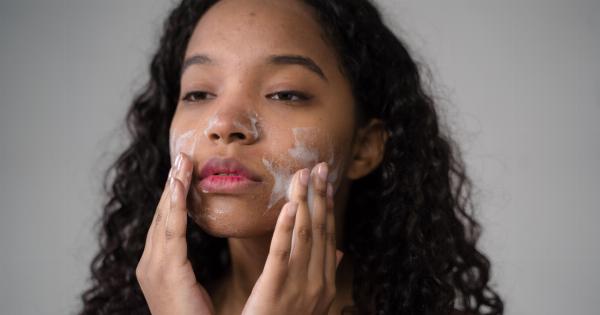Acne is a common skin condition that affects both teenagers and adults.
While there are several factors that can contribute to the development of acne, including hormonal changes and genetics, studies have shown that diet can also play a significant role. In particular, certain foods have been found to exacerbate acne symptoms in teenagers. This article will explore some of the worst foods for teenage acne and discuss why they should be avoided.
1. Dairy Products
Dairy products such as milk, cheese, and yogurt have been linked to acne breakouts in teenagers. This is because dairy contains hormones and bioactive molecules that can stimulate oil production and trigger inflammation in the skin.
Moreover, dairy products may also increase the production of insulin-like growth factor (IGF-1), which can further worsen acne symptoms.
2. High-Glycemic Foods
Foods with a high glycemic index, such as white bread, pasta, sugary drinks, and processed snacks, can rapidly raise blood sugar levels.
This spike in blood sugar stimulates the release of insulin and insulin-like growth factor binding proteins, ultimately leading to increased oil production and inflammation in the skin. Consequently, consuming high-glycemic foods can worsen acne symptoms in teenagers.
3. Chocolate
Although the connection between chocolate and acne is still debated among experts, some studies suggest that chocolate may promote acne breakouts in certain individuals.
Chocolate contains high levels of sugar, dairy, and unhealthy fats, which can all contribute to acne development. Additionally, the presence of methylxanthines, such as caffeine and theobromine, in chocolate has been suggested to play a role in acne exacerbation.
4. Fast Food
The consumption of fast food has been associated with an increased risk of developing acne in teenagers. Fast food often contains high amounts of unhealthy fats, sugar, and salt, which can lead to inflammation and hormonal fluctuations.
Furthermore, the deep-frying process used to cook many fast food items produces harmful chemicals that can clog pores and worsen acne symptoms.
5. Spicy Foods
Spicy foods, such as chili peppers and hot sauces, can cause inflammation and irritation in the digestive system. This can lead to an immune response that triggers acne breakouts in some teenagers.
Although not everyone is sensitive to spicy foods, it is advisable to limit their consumption if you are prone to acne.
6. Sodas and Energy Drinks
Sodas and energy drinks are high in sugar and often contain artificial additives, both of which can contribute to acne development.
These beverages have a high glycemic index and can cause insulin spikes, leading to increased oil production and inflammation in the skin. Additionally, the caffeine content in energy drinks can also worsen acne symptoms in some individuals.
7. Processed Meats
Processed meats such as sausages, hot dogs, and deli meats are usually high in sodium, unhealthy fats, and preservatives. These ingredients can trigger inflammation in the body, which may aggravate acne symptoms.
Additionally, processed meats often contain high levels of omega-6 fatty acids, which can disrupt the balance of omega-3 to omega-6 ratio in the body and contribute to inflammation.
8. High-Fructose Corn Syrup
High-fructose corn syrup (HFCS) is a common sweetener used in many processed foods and beverages. HFCS has a high glycemic index and can cause insulin spikes, leading to increased oil production and inflammation in the skin.
Furthermore, HFCS has been found to disrupt hormone regulation in the body, which can contribute to acne breakouts.
9. Artificially Sweetened Foods
Artificial sweeteners, such as aspartame and sucralose, are commonly used in sugar-free products.
While they may not directly cause acne, some studies suggest that artificial sweeteners can disrupt gut health and contribute to inflammation, which can indirectly worsen acne symptoms. It is advisable to limit the consumption of artificially sweetened foods if you are prone to acne.
10. Foods High in Omega-6 Fatty Acids
While omega-6 fatty acids are essential nutrients, consuming them in excess can promote inflammation in the body.
Diets that are high in omega-6 fatty acids and low in omega-3 fatty acids, found in foods like fatty fish and walnuts, can disrupt the balance of these fats and contribute to acne development. It is important to maintain a balanced omega-3 to omega-6 ratio for overall skin health.



























